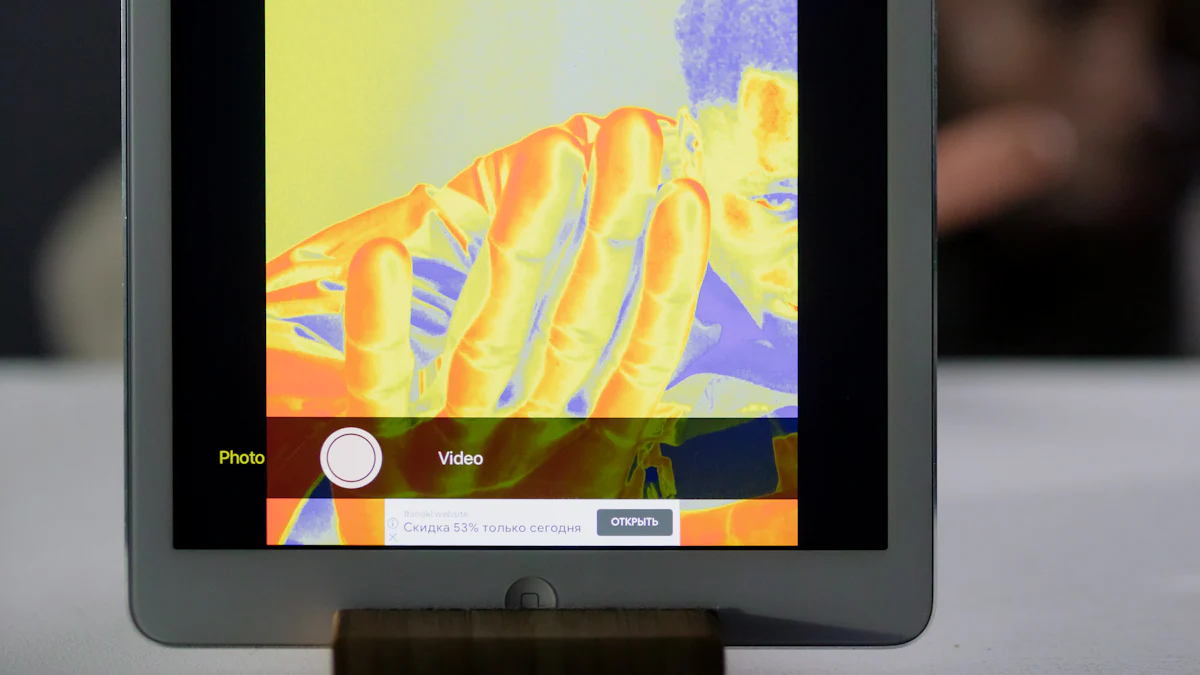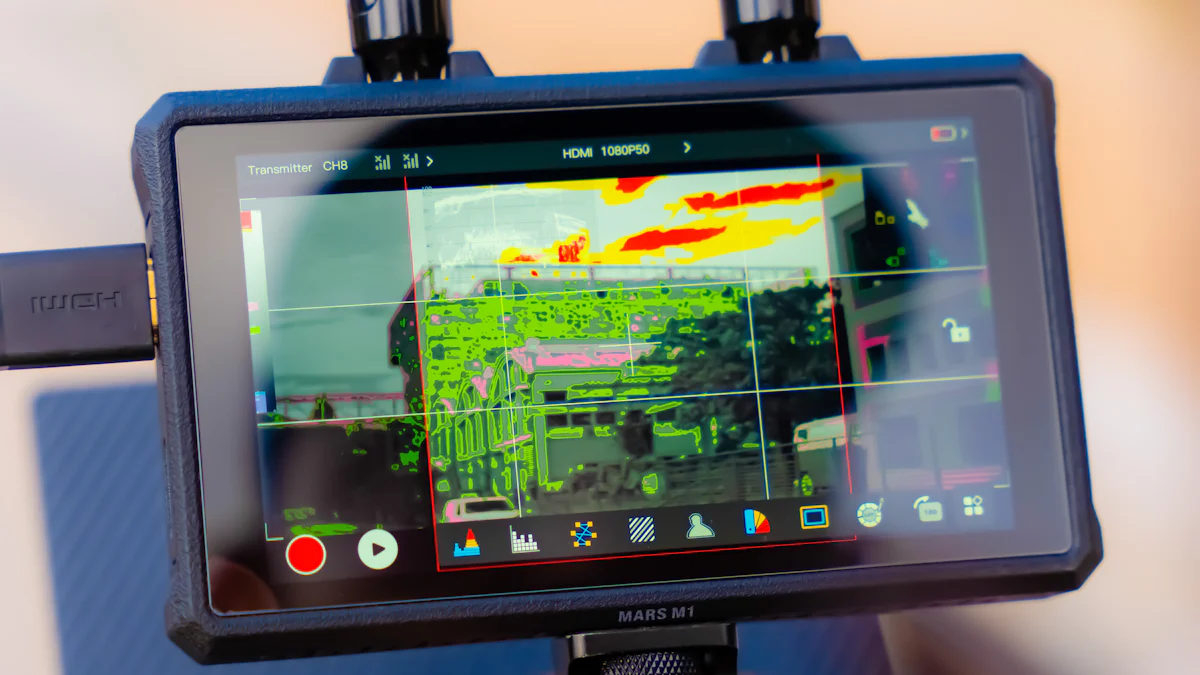How Thermal Imaging Cameras Function and Their Uses

Thermal imaging cameras detect infrared radiation to create images that reveal temperature differences. These cameras convert thermal energy into visible images, allowing you to analyze heat patterns easily. You’ll find that they play a crucial role in various fields. For instance, in medical imaging, they help detect fevers, while in security, they spot intruders even in complete darkness. This technology relies on advanced sensors that measure temperature variations, making it a powerful tool for many applications.
Key Takeaways
Thermal imaging cameras see infrared light. This helps you see temperature differences in many uses.
These cameras are important for security. They can spot intruders in the dark, making places safer.
In hospitals, thermal imaging quickly checks for fevers and pain. It gives helpful health information without touching patients.
Thermal imaging helps find problems in buildings. It spots energy leaks and moisture, saving money and improving efficiency.
This technology is key for watching the environment. It helps find leaks and track temperature changes to fight climate issues.
The Technology Behind Thermal Imaging

When you think about thermal imaging, understanding infrared radiation is key.
Understanding Infrared Radiation
Definition of Infrared Waves
Infrared waves are a type of electromagnetic radiation. They sit just beyond the visible light spectrum, meaning you can't see them with your eyes. But don't worry! Thermal imaging cameras can detect these waves and turn them into images you can analyze.
How Infrared is Emitted by Objects
Every object emits infrared radiation based on its temperature. Warmer objects emit more infrared radiation than cooler ones. This principle allows thermal cameras to capture temperature differences in their surroundings. For instance, a hot engine will show up brightly on a thermal image, while a cold surface will appear darker.
Components of Thermal Imaging Cameras
Now, let’s dive into the components that make thermal imaging cameras work.
Lens and Sensor Types
Thermal cameras use different types of sensors to capture infrared radiation. You might encounter cooled detectors like MCT (Mercury Cadmium Telluride) and InSb (Indium Antimonide), which provide high accuracy. On the other hand, uncooled detectors, such as VOx (Vanadium oxide), are compact and cost-effective. Each type has its own specifications, including resolution and thermal sensitivity, which affect the camera's performance.
Image Processing Software
Once the camera captures the infrared data, it relies on sophisticated image processing software. This software enhances the image quality and translates the raw data into a visual format. Recent advancements have significantly improved the accuracy and resolution of thermal imaging devices, making them more effective in various applications.
How Thermal Images are Created
So, how does a thermal camera turn data into visuals?
Conversion of Data to Visuals
The thermal camera captures infrared radiation emitted from objects in its field of view.
The camera's software processes the captured radiation data.
The data is translated into a thermal image representing temperature variations.
Different colors are assigned to temperature values, with warmer areas in red and cooler areas in blue.
Color Palettes and Temperature Mapping
The use of color palettes helps you quickly identify temperature differences. For example, a thermal image might show a building's heat loss in bright red, indicating areas that need insulation. This visual representation makes it easier for you to analyze and act on the information.
Applications of Thermal Imaging

Thermal imaging has a wide range of applications that benefit various fields. Let’s explore some of the most significant uses.
Research and Development
Environmental Monitoring
In environmental monitoring, thermal imaging cameras play a vital role. They help detect gas and oil leaks, allowing you to address issues before they escalate. This technology also aids in tracking temperature changes in ecosystems, which is crucial for understanding climate change impacts.
Material Analysis
When it comes to material analysis, thermal imaging devices are invaluable. They allow you to monitor industrial production processes, ensuring quality control. You can spot energy loss in machinery, helping to improve efficiency and reduce costs.
Security and Surveillance
Security is another area where thermal cameras shine.
Intrusion Detection
These cameras excel at detecting intruders, especially in low-light conditions. They can cover larger areas with fewer units compared to traditional cameras. This means you can monitor more ground without the hassle of multiple setups. Plus, they require minimal maintenance since they don’t rely on visible light.
Perimeter Security
For perimeter security, thermal imaging cameras are a game-changer. They work effectively in all weather conditions, making them reliable for protecting critical infrastructure. You can use them at construction sites to detect unauthorized entry at night or monitor retail locations after hours.
Wildlife Monitoring
Thermal imaging also plays a crucial role in wildlife monitoring.
Animal Behavior Studies
Using thermal cameras, researchers can study animal behavior without disturbing their natural habitats. This non-intrusive technique allows for real-time data collection, even in poor visibility conditions. For example, you can track nocturnal animals like black-footed ferrets, which are hard to spot using traditional methods.
Habitat Assessment
In habitat assessment, thermal imaging helps you evaluate ecosystems efficiently. Drone-mounted thermal cameras enable researchers to cover large areas, identifying potential targets from above. This technology is essential for estimating animal populations and health, which is vital for conservation efforts.
Firefighting
When it comes to firefighting, thermal imaging cameras (TICs) are invaluable tools. They help firefighters navigate through dark and smoky environments, making their jobs safer and more efficient.
Locating Hot Spots
One of the primary uses of thermal imaging in firefighting is locating hot spots. Here’s how it works:
TICs visualize thermal signatures, allowing you to see where the heat is concentrated.
You can scan low first to operate the camera in high sensitivity, revealing critical details.
Scanning systematically—low, then middle, then high—ensures you don’t miss important information like victims or hazards.
Proper sensitivity settings on the TIC are essential for effective navigation and safety during operations.
After a fire, these cameras assist in monitoring for any remaining hot spots. This ensures that the fire is fully extinguished, preventing reignition.
Search and Rescue Operations
Thermal imaging cameras are also critical in search and rescue operations. They allow firefighters to locate victims and animals trapped in smoke-filled buildings. The ability to see through smoke and darkness can make all the difference in saving lives.
Building Diagnostics
Thermal imaging cameras are not just for emergencies; they also play a significant role in building diagnostics.
Energy Efficiency Assessments
You can use thermal imaging to assess energy efficiency in buildings. By identifying areas where heat escapes, you can make informed decisions about insulation and energy use. This early detection of issues can lead to significant savings on repairs and energy costs.
Moisture Detection
Moisture detection is another vital application. Thermal cameras can identify leaks and moisture buildup without damaging the building. They quickly scan large areas, pinpointing problems in real time. This capability enhances safety by preventing potential failures in electrical systems and ensures proper installation of insulation.
Medical Uses
In the medical field, thermal imaging has gained traction for its effectiveness in various applications.
Fever Detection
Thermal imaging cameras are widely used for fever detection. They can quickly screen individuals for elevated body temperatures, which is especially useful in public health settings. This technology has advanced significantly, enhancing its reliability and efficiency in diagnosing conditions.
Pain Assessment
Additionally, thermal imaging helps in pain assessment. By visualizing temperature differences in the body, healthcare professionals can identify areas of inflammation or injury. This non-invasive method provides valuable insights into a patient’s condition.
Thermal imaging cameras are essential tools across many industries. They help you spot temperature differences, which boosts safety and efficiency. For instance, you can detect failures early, preventing severe damage. You also improve security by identifying risk areas with extreme temperatures. Plus, you save energy by finding heat leaks.
Exploring thermal imaging technology opens doors to innovative solutions in fields like healthcare, security, and environmental monitoring. So, whether you're a professional or just curious, there's a lot to discover!
FAQ
What is a thermal imaging camera used for?
Thermal imaging cameras detect heat emitted by objects. You can use them for various applications, including security, firefighting, building diagnostics, and medical assessments. They help visualize temperature differences, making it easier to identify issues.
How does thermal imaging work?
Thermal imaging works by capturing infrared radiation emitted from objects. The camera's sensors detect this radiation and convert it into a visual image. You can then analyze the image to see temperature variations.
Are thermal imaging cameras expensive?
The cost of thermal imaging cameras varies widely. Basic models can start around a few hundred dollars, while advanced units can exceed several thousand. Your choice depends on the features and specifications you need.
Can thermal imaging detect people?
Yes! Thermal imaging cameras can easily detect people based on their body heat. This capability makes them valuable for security and search-and-rescue operations, especially in low-light or smoky conditions.
Is thermal imaging safe for medical use?
Absolutely! Thermal imaging is a non-invasive technique. It poses no risk to patients and provides valuable information about body temperature and inflammation. Many healthcare professionals use it for quick assessments.